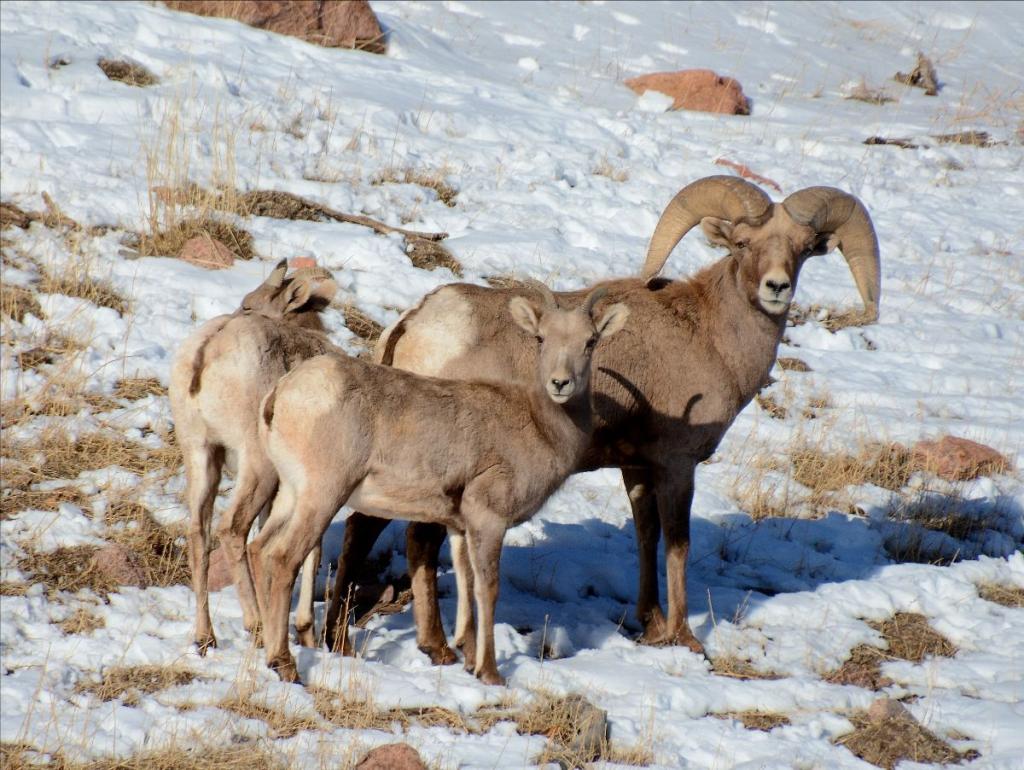CPW to use low-flying helicopters to assess deer, elk and bighorn sheep in southeast Colorado

 Bill Vogrin
Bill VogrinSoutheast Region Public Information Officer
719-466-3927 / [email protected]

Dec. 11, 2023
CPW to use low-flying helicopters to assess deer, elk and bighorn sheep in southeast Colorado
COLORADO SPRINGS, Colo. – Beginning Dec. 15, Colorado Parks and Wildlife biologists will assess deer and bighorn sheep populations on the southeastern plains of Colorado, east of Interstate 25, by conducting low-altitude helicopter flights.
The CPW staff will conduct similar flights west of I-25, doing surveys and capture work in South Park, the Upper Arkansas Valley, the Pikes Peak Region, the Sangre de Cristo mountains, the Wet Mountain Valley and over Fishers Peak State Park in Trinidad.
“The helicopters will spend a brief amount of time in a specific area to count and categorize individual herds and then move on, searching for more deer, elk or bighorn sheep,” said Julie Stiver, senior wildlife biologist for CPW’s Southeast Region, based in Colorado Springs.
“Each year, CPW biologists inventory thousands of animals statewide to develop a picture of the productivity and composition of big game in Colorado. The data is critical to our work of forming population models, management strategies and to set future hunting license numbers.”
Disturbances by the flights typically only last a few minutes in any one area.
The southeastern plains flight plan calls for helicopters to start flying in the South Republican River drainage from Flagler to the Kansas state line. The helicopter will then be in Kit Carson and Cheyenne counties followed by tours of Kiowa, Prowers and Baca counties.
From there, the helicopter surveys will fly along the Arkansas River from the Kansas state line to Pueblo and southwest along the Purgatoire River.
On the flights west of I-25, biologists intend to survey and classify deer, elk and bighorn sheep.
Capture work will occur in the Upper Arkansas Valley from Cañon City to Leadville. CPW staff will be trying to catch 60 mule deer fawns to fit them with radio-collars so that biologists can study their survival rates. This work is for a 25-year project that started in 1999 to collect data and monitor survival in the deer herd.
More capture work is planned in South Park and the Upper Arkansas Valley where CPW biologists hope to catch 65 cow elk and 60 calf elk. Each will be fitted with a radio collar so biologists can study their survival rates and movement patterns.
CPW biologists hope to conclude their herd assessment and capture operation flights by late January.
For more information on CPW’s wildlife population objectives, visit: cpw.state.co.us/ThingsToDo/pages/HerdManagementPlans.aspx
For information about the policies CPW uses to guide its decisions to collar animals for movement studies, visit: cpw.state.co.us/conservation/Pages/CON-Transport-Corridors.aspx
Colorado Parks and Wildlife (CPW) is an enterprise agency, relying primarily on license sales, state parks fees and registration fees to support its operations, including: 43 state parks and more than 350 wildlife areas covering approximately 900,000 acres, management of fishing and hunting, wildlife watching, camping, motorized and non-motorized trails, boating and outdoor education. CPW's work contributes approximately $6 billion in total economic impact annually throughout Colorado.
DISCLAIMER: The Colorado Parks and Wildlife (CPW) website maintains press releases containing historical information that may no longer be accurate. Press releases are dated, which should be noted to determine whether the information provided is current. Please review our current regulations and brochures for up-to-date information.